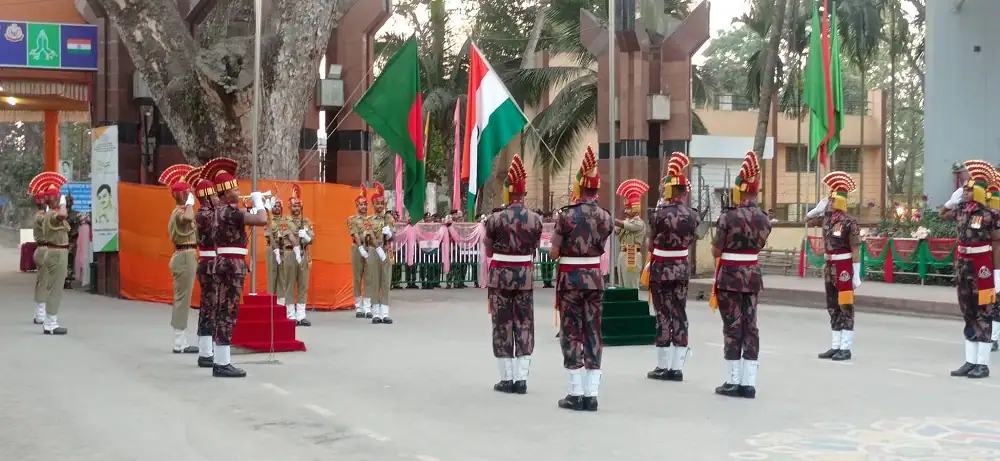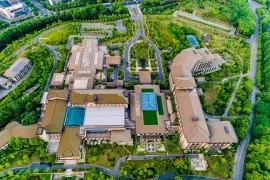The bilateral trade between Bangladesh and India grew threefold over the past decade. Based on statistics from the Bangladesh Bank (BB) and the Export Promotion Bureau (EPB), bilateral trade between India and Bangladesh has increased by 200% to US$15.93 billion in fiscal year 2021-22 from only US$5.3 billion in fiscal year 2012-13. Despite an average growth rate of approximately 20% for Bangladesh’s exports to India over the past 12 years, the exports from Bangladesh to India amounted to only US$1.98 billion out of the total US$15.93 billion trade in fiscal year 2021-22. The presence of various non-tariff barriers to India-Bangladesh trade has been impeding the overall growth of their trade relationship. It is crucial to address these trade barriers in order to foster a stronger and mutually beneficial trade relationship between the two nations.
Current scenario of Bangladesh-India trade relation
Economic and trade relations of the two nations are significantly influenced by their social, economic, and cultural connections. Currently, Bangladesh is enjoying India’s ‘Duty-Free Tariff Preference (DFTP) Scheme’, which was established in 2008 after a decision was made at the World Trade Organization’s (WTO) Hong Kong Ministerial Conference (MC6). This scheme provides duty-free access to 98.2% of India’s products. Additionally, Bangladesh received tariff benefits through the South Asian Free Trade Agreement (SAFTA), which, however, is in a precarious state. Furthermore, certain Bangladeshi producers have improved their marketing strategies, which has aided in increasing exports to India.
While both nations have made efforts to improve trade, these efforts have only played a limited role in boosting Bangladesh’s exports to India. The main reason behind the widening trade deficit from Bangladesh side in the bilateral trading activities is the presence of various tariffs, non-tariff barriers, and anti-dumping measures in India. Of them, Non-Tariff Barriers (NTBs) have had a particularly adverse effect on Bangladesh’s exports to India.
What is Non-Tariff Barrier (NTB)?
A non-tariff barrier (NTB) is a measure used by countries to safeguard their domestic industries against imports, and unlike tariffs or taxes, these barriers can create obstacles or even prevent trade altogether. Examples of NTBs include technical regulations, sanitary and phytosanitary measures, customs procedures, and licensing requirements. In the case of India and Bangladesh, both countries have implemented a number of NTBs, resulting in challenges for trade between them. Therefore, it is important to take a closer look at the India-Bangladesh trade barriers.
List of major NTBs for Bangladesh in Indian market
Technical Barriers
India frequently transforms non-tariff measures designed to ensure compliance with sanitary and phytosanitary standards into non-tariff barriers and technical barriers to trade for Bangladesh.
Lack of infrastructure
The lack of adequate infrastructure, including ports, roads, railways, and customs facilities, has been a significant barrier to trade between India and Bangladesh. Poor infrastructure has increased the cost of transportation and slowed down the movement of goods between the two countries.
Visa issues
Visa issues have also been a significant barrier to trade between India and Bangladesh. Obtaining visas for business travel is a time-consuming and expensive process, which has deterred many traders from doing business between the two countries.
Border issues
Border issues, including delays in customs clearance, bureaucratic procedures, and corruption, have also hindered trade between India and Bangladesh. The lengthy and cumbersome process of obtaining permits and approvals at the border has discouraged many traders from engaging in cross-border trade.
Political tensions
Political tensions between India and Bangladesh have also been a significant barrier to trade between the two countries. The historical tensions and disputes between the two countries have spilled over into trade relations, leading to occasional trade disputes and retaliatory measures.
Lack of coordination and communication
There is also a lack of coordination and communication between the two countries on trade-related issues. This lack of coordination has led to misunderstandings and disputes between traders, customs officials, and other stakeholders involved in cross-border trade.
Non-tariff barriers in the form of technical regulations
Technical regulations can act as non-tariff barriers to trade when they create unnecessary and disproportionate obstacles to imports. Technical regulations in India and Bangladesh can differ significantly, which can create confusion and complexity for traders.
High transportation costs
High transportation costs due to inadequate infrastructure, logistical challenges, and regulatory hurdles have increased the cost of doing business between India and Bangladesh.
How non-tariff barriers affect India-Bangladesh trades
Increases trade costs
NTBs can significantly increase trade costs by imposing additional requirements and procedures on traders. For example, technical regulations, sanitary and phytosanitary measures, and customs procedures can increase the time and cost of doing business between India and Bangladesh.
Reduces competitiveness
They reduce the competitiveness of traders by limiting their access to foreign markets. Bangladeshi SMEs, in particular, may face difficulties in complying with complex regulations and standards, which makes it difficult for them to compete with larger firms.
Limited market access
Non-Tariff Barriers can restrict market access by creating unnecessary and disproportionate obstacles to imports. This can reduce the availability of goods and services in the domestic market and limit consumers’ choices.
Thin trade volume
The volume of trade may shrink due to the increasing cost and complexity of doing business arising from NTB. Traders may choose to avoid cross-border trade altogether or shift to other markets with more favorable trade conditions.
Limits economic growth
Such barriers are likely to have a negative impact on economic growth by reducing the volume of trade and limiting access to foreign markets. This can hinder the development of new industries, reduce employment opportunities, and limit economic opportunities for small businesses.
Increases informal trade
Non-Tariff Barriers can also encourage informal trade by making it difficult for traders to comply with formal regulations and standards. Informal trade can undermine the effectiveness of formal trade policies and reduce government revenue from customs duties and taxes. There is a significant amount of smuggled goods that cross the border from India into Bangladesh. Many experts believe that the value of smuggled goods from India may be close to, if not equivalent to, the value of legal trade from India to Bangladesh.
As neighboring countries, the prospect and potential of Bangladesh-India bilateral trade is substantial. Removal of the India-Bangladesh trade barriers could reduce cost and increase the flow of investments significantly for both nations. Recently, Bangladesh witnessed an increase in investment from India following the rise in trading activities between the two countries. Over the past five years, the yearly average Foreign Direct Investment (FDI) from India in Bangladesh was US$118 million. Moreover, engaging in bilateral trade using rupees and takas has the potential to curb crises like the ongoing inflation arising from the strong dollar against a weak Taka or Indian rupee, and could aid both countries to achieve economic stability and sustainability.








